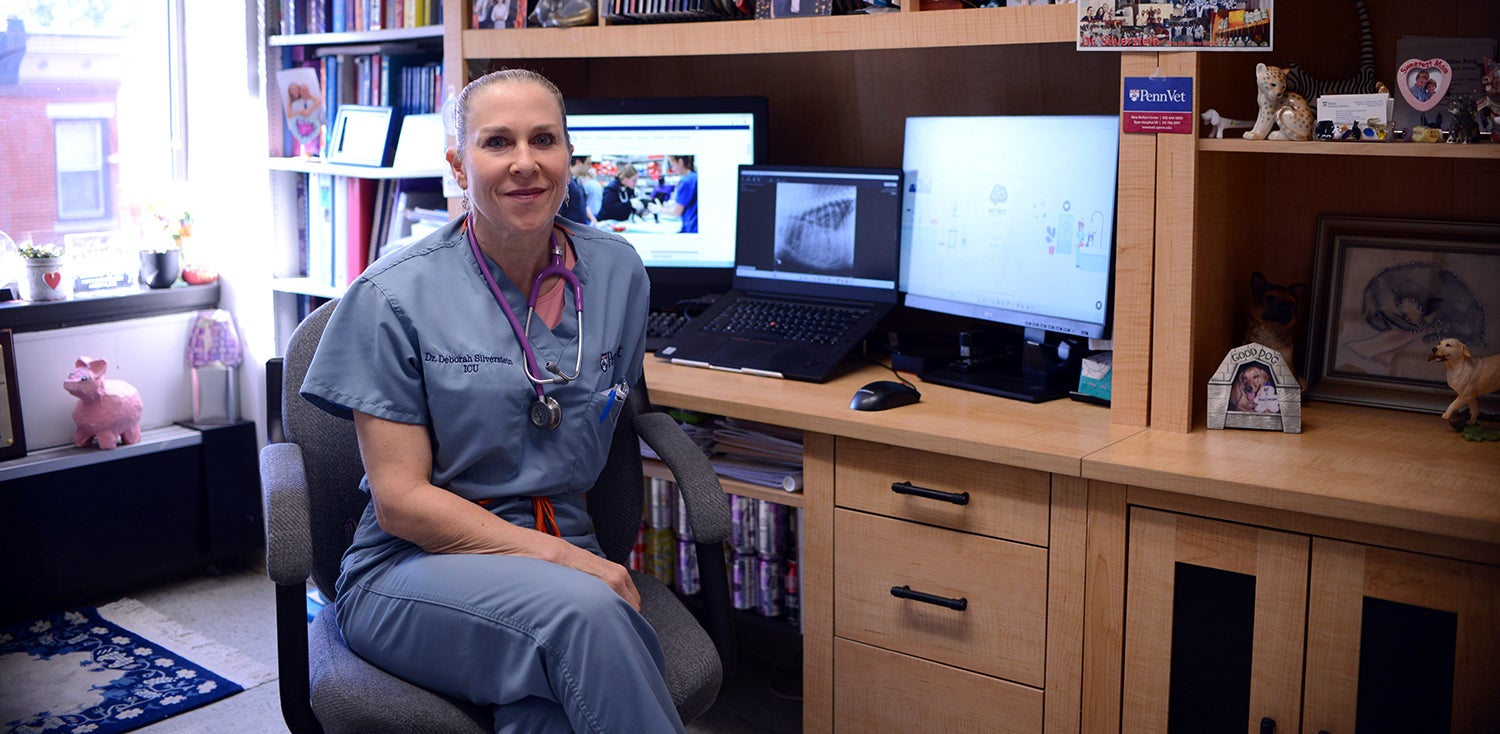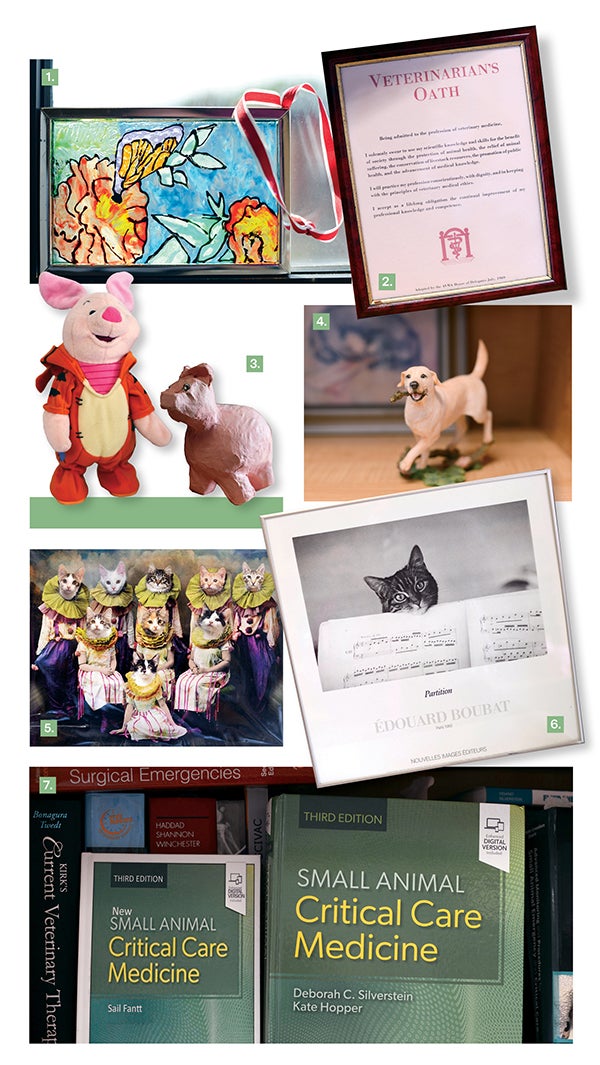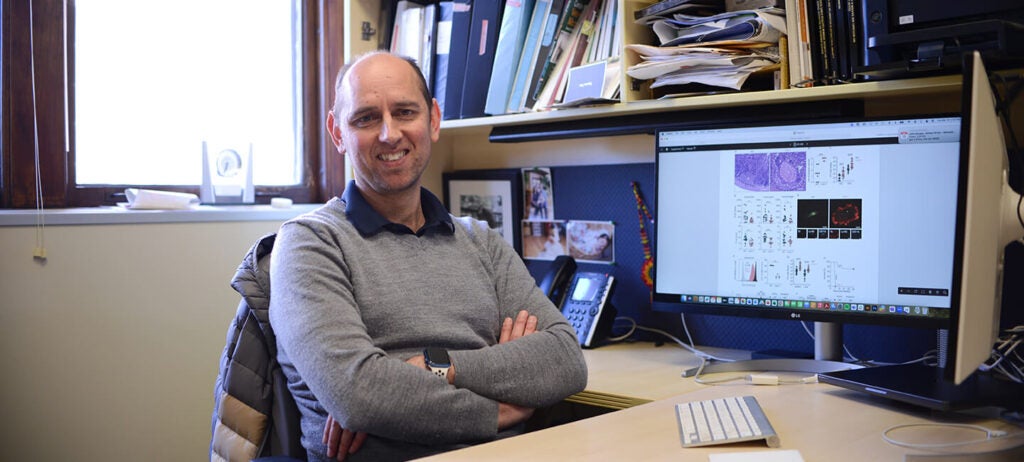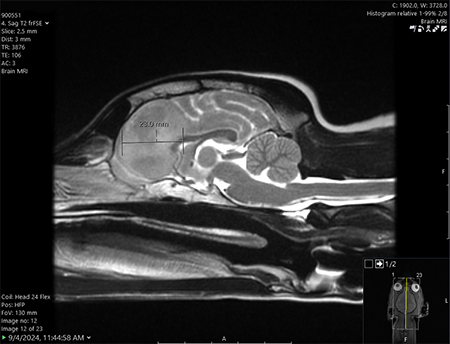In the Office with Dr. Deborah Silverstein

Deborah Silverstein, DVM, DACVECC, is as passionate today about her patients, clients, and career as she was when she came to Penn Vet more than twenty years ago. Her days move quickly, and she wouldn’t have the pace any other way.
“Our patients are often critically ill, and our ability to act fast and appropriately can be their only chance at survival,” she said. “It’s intense work, but, at the end of the day, if I feel like I made a difference for a patient or client, student, resident, or nurse, it was all worthwhile.”
The dynamic nature of emergency care requires quick triage and meticulous attention for a wide array of conditions. “Emergency and critical care medicine requires a deep knowledge of physiology and a thorough understanding of the animal body and all its different systems. We treat everything from eyes to ears, heart to lungs, kidneys to the tail. And you never know what each day will bring—it’s impossible to feel stagnant or predict what’s next. I like that—I like having to think on my feet and think critically and creatively. And I like that we’re still advancing a relatively young specialty of veterinary medicine.”
As one of the pioneers in the field, Silverstein doesn’t spend much time in her office. When she is there, she’s surrounded by love. Her walls and shelves are filled with art, messages, and tokens of gratitude from family, friends, clients, students, residents, and colleagues.
1. Gifts of the heart, made by the hand. One of our longtime, now retired, ICU nurses, Chantal [Reme], made this. She was a superstar who led the way in critical care nursing in several ways. And she’s so crafty—this is one of many cute things she made and gifted me. I am always in awe of her talent.
2. Do No Harm. This is my touchpoint. I always remind students and house officers that ‘do no harm’ is the heart of our oath. Every decision, even something as simple as administering IV fluids, requires us to ask if the risk is worth the potential benefit. We are the voice for animals who can’t speak; it’s our duty to ensure their well-being. Above all, we must protect our patients, keep their best interests at heart, and never forget the trust the little furry creatures place in us.
3. Sow Much Love. I’ve loved and collected pigs since childhood. My children made the papier-mâché pig for me. Piglet came from my mentor, Steve Haskins. He was a big reason I went into emergency and critical care medicine. He was a leader in the field who sadly passed away too soon in an airplane accident. This is a lovely reminder of him and his contributions.
4. Cats in costume. My mother is an avid cat lover, and I think that’s where I get my love of cats. She collects cat art and sends pieces to me—some are odd, others more normal. I think this one is hilarious!
5. One stop for studying. When I took my specialty boards, I dragged around 50–60 pounds of books because there wasn’t a single source that covered everything we needed to study—kidneys, lungs, heart, all the organs and diseases. I swore I’d make it easier for future residents to study for their final boards. I collaborated with my then-resident mate, Kate Hopper, to publish a comprehensive textbook for critical care medicine. It’s now in its third edition. There was even a scam version sold on Amazon—the smaller version on the left—full of nonsense about lumberjacks and logging. Amazon has since taken the fake down.
6. Catitute and gratitude. This picture is a classic! It used to hang in Lesley King’s office. Lesley was instrumental in developing the veterinary intensive care specialty and Penn Vet’s Intensive Care Unit. She hired me more than 20 years ago and mentored me as a young faculty member. She was a legend, and I inherited this gorgeous photo from her.
7. Samantha, the success story. During my residency, I had a patient named Samantha who looked like this and was a wonderful success story. She was six months old with a disorder called congenital megaesophagus, which means her throat was unable to propel food into the stomach properly. She responded well to treatment and lived a normal life. I kept in touch with her owners for more than a decade, and they sent me this dog figure when she passed away.

More from Bellwether

From Bird Fractures to Human Shoulders
As a child in Central Pennsylvania, Stephen Peoples, V’84, loved science and the natural world.

In the Office with Igor Brodsky, PhD
In his Philadelphia-based lab, Igor Brodsky is on a mission to understand how the body recognizes and responds to invading organisms that cause several diseases.

One Tiny Dog’s Outsized Contribution to Brain Surgery
Geddy Lee has lived a big life for a little dog. As a puppy, the tiny terrier mix was abandoned in Mississippi during a high-speed car chase. Rescued by law…
